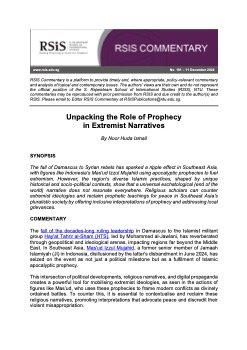By : Piotr Bąkowsk
The questions of why terrorism occurs and how to stop it have haunted European citizens ever since the series of terrorist attacks across the EU that started in the early 2000s. The idea that someone might become a terrorist by going through a 'radicalisation' process seemed like a plausible explanation and therefore quickly gained ground among EU policymakers. Even though experts still disagree over what radicalisation is and whether focusing on it has really advanced the understanding of terrorism, the idea of the close linkages between the two phenomena has endured for better or for worse. Although the terrorism threat the EU faces has evolved, measures to prevent radicalisation are still a key component of EU counter-terrorism efforts as the radicalisation debate goes on
Brussels: EPRS | European Parliamentary Research Service. 2025 57p.





















